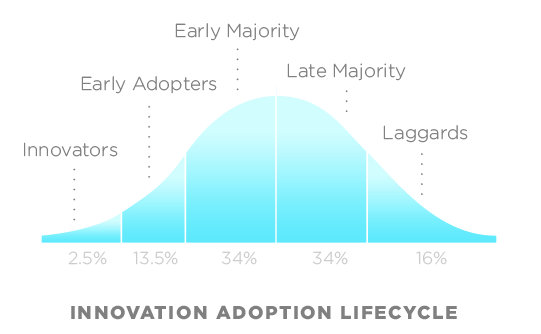Author Archives: Paul Goodman
AAPL: a view from the top of the heap
A blog post that John passed along:
http://www.fool.com/investing/general/2012/04/14/a-decade-of-apple-visualized.aspx
An excerpt:
I’ve compiled more than 10 years of operating data on the Mac maker, starting with the first quarter of fiscal 2002, the fiscal quarter when the iPod was launched — and I’m happy to share my findings with you, my Foolish reader. Let’s take an illustrative trip down memory lane and see the inner workings of Apple’s meteoric rise to become the largest company in the world over the past decade.
Final Assignment Instructions
Many of our discussions have focused on the strengths and weaknesses of well-known companies like Facebook, Zynga, Amazon, Twitter, and Yelp. For the final assignment, you and your team will consider how you would take down a leader in the field of information-centered ventures. You’ll analyze the market, assess the competition, develop a the outline of a business model, and formulate a market entry strategy. Your deliverables:
- A seven minute presentation to be delivered to the class with the elements above (Please e-mail your presentation to Paul before class and make sure to bring handouts of your slides – 4 to a page is fine.)
- A five page paper in the style of a “memo to the board” that details your approach. Use 11 point type, one inch margins, and 1.5 spacing.
Two notes: Yelp is off limits given that we already spent a class session considering how to take on Yelp. If your group is short on inspiration, talk to us for help in coming up with a good target company.
Team Assignments
Team 1:
Ariel C, Andrew C, Brendan C and Travis Y
Team 2:
Ian D, Philipp G, and Lena Hoeck
Team 3:
Casey L, Kari M, and Thomas M
Team 4:
Prayag N, Angel R, and Darya S
Questioning Gamification, and some unintended consequences
Ian mentioned CowClicker today, and I highly recommend reading this article about Ian Bogost and his quest to make a point about the rise of social games of the Zynga variety:
http://m.wired.com/magazine/2011/12/ff_cowclicker/all/1
An excerpt:
Remembering his cow-clicker idea, Bogost threw together a bare-bones Facebook game in three days. The rules were simple to the point of absurdity: There was a picture of a cow, which players were allowed to click once every six hours. Each time they did, they received one point, called a click. Players could invite as many as eight friends to join their “pasture”; whenever anyone within the pasture clicked their cow, they all received a click. A leaderboard tracked the game’s most prodigious clickers. Players could purchase in-game currency, called mooney, which they could use to buy more cows or circumvent the time restriction. In true FarmVille fashion, whenever a player clicked a cow, an announcement—”I’m clicking a cow“—appeared on their Facebook newsfeed.
And that was pretty much it. That’s not a nutshell description of the game; that’s literally all there was to it. As a play experience, it was nothing more than a collection of cheap ruses, blatantly designed to get players to keep coming back, exploit their friends, and part with their money. “I didn’t set out to make it fun,” Bogost says. “Players were supposed to recognize that clicking a cow is a ridiculous thing to want to do.”
Bogost launched Cow Clicker during the NYU event in July 2010. Within weeks, it had achieved cult status among indie-game fans and social-game critics. Every “I’m clicking a cow” newsfeed update served as a badge of ironic protest. Players gleefully clicked cows to send a message to their FarmVille-loving friends or to identify themselves as members of the anti-Zynga underground. The game began attracting press on sites like TechCrunch and Slashdot.
Until one is committed, there is hesitancy, the chance to draw back
Until one is committed, there is hesitancy, the chance to draw back– Concerning all acts of initiative (and creation), there is one elementary truth that ignorance of which kills countless ideas and splendid plans: that the moment one definitely commits oneself, then Providence moves too. All sorts of things occur to help one that would never otherwise have occurred. A whole stream of events issues from the decision, raising in one’s favor all manner of unforeseen incidents and meetings and material assistance, which no man could have dreamed would have come his way. Whatever you can do, or dream you can do, begin it. Boldness has genius, power, and magic in it. Begin it now.
http://www.goethesociety.org/pages/quotescom.html
Rapid Startup Requirements
See the deck below.
60 Minutes on Groupon
I thought this was a relatively good interview featuring Andrew Mason of Groupon.
60 Minutes asks some good questions about where Groupon came from, what they’re doing, and how they’re going to stick around. Related to today’s discussion with regard to personalization of offers (do you need another spa treatment?).
http://www.cbsnews.com/video/watch/?id=7395218n
Notes on the upcoming reading exam
History of the Zipper
It was a long way up for the humble zipper, the mechanical wonder that has kept so much in our lives ‘together.’ On its way up the zipper has passed through the hands of several dedicated inventors, none convinced the general public to accept the zipper as part of everyday costume. The magazine and fashion industry made the novel zipper the popular item it is today, but it happened nearly eighty years after the zipper’s first appearance.
http://inventors.about.com/library/weekly/aa082497.htm
